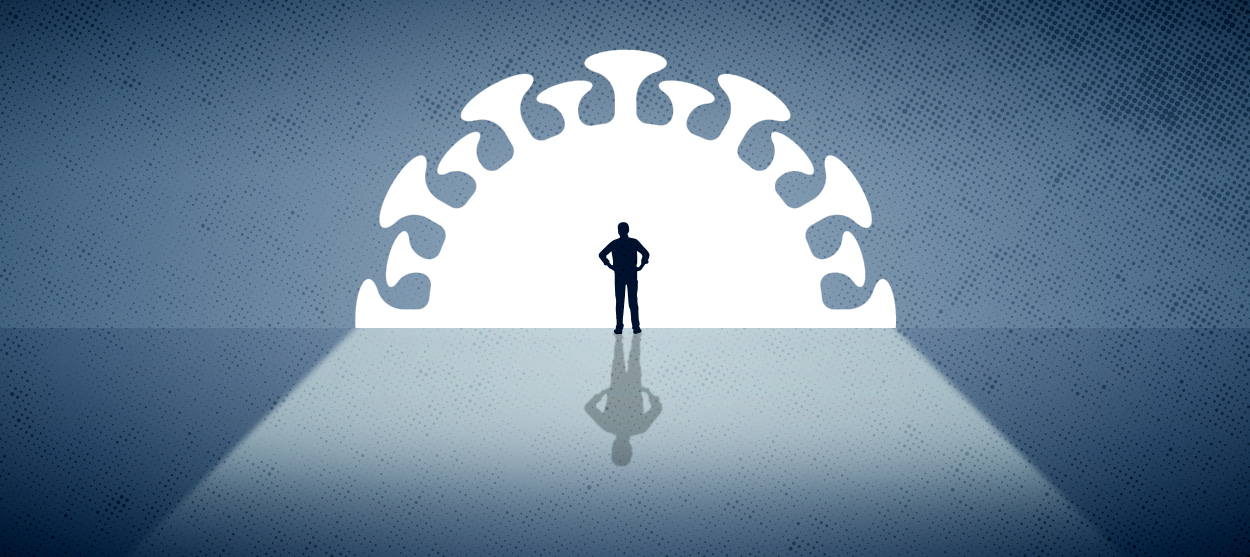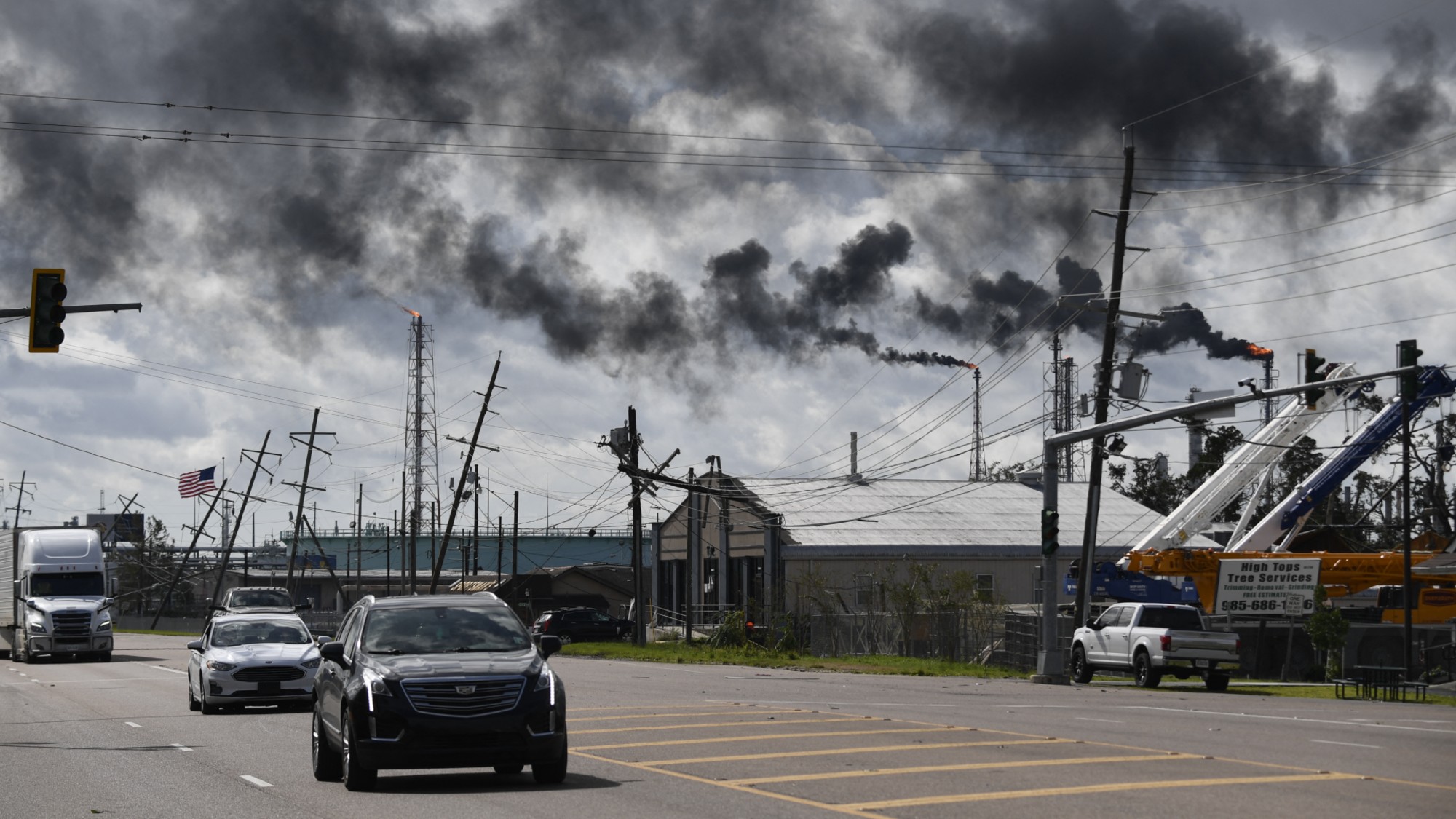The case for cautious optimism about the pandemic
Is the fatality rate falling?


Time to let the sunshine in. I would like to suggest that we should be feeling more optimistic about the coronavirus epidemic than most of us have allowed ourselves to be.
This is not meant as an inducement to stop taking the virus seriously or to defy state and municipal orders, regardless of their actual legal status. It is simply an acknowledgement of the evidence that this disease, while horrible, may not be nearly as deadly as some of us, including public health officials such as the cautious Dr. Anthony Fauci, have feared.
We know this is possibly the case because other countries have already shown it to be so. Consider Germany, which has the fifth highest number of cases in the world but a fatality rate of 0.5 percent, astonishingly less than has been observed in Italy, where testing has lagged in spite of high fatalities, and enormously lower than the 2 or even 3 percent some experts predicted early on.
The Week
Escape your echo chamber. Get the facts behind the news, plus analysis from multiple perspectives.

Sign up for The Week's Free Newsletters
From our morning news briefing to a weekly Good News Newsletter, get the best of The Week delivered directly to your inbox.
From our morning news briefing to a weekly Good News Newsletter, get the best of The Week delivered directly to your inbox.
How is this possible, especially in a country in which even two weeks ago millions of people were going about their daily lives more or less as usual, having parties and congregating in public parks? It could be argued, of course, that the Germans are simply better at everything, including saving the lives of the desperately ill. But a far less facile explanation is that the German fatality rate is lower because they have tested so many people. This is why scientists there are already preparing to shift efforts toward testing for antibodies to see how many people are already immune to the disease, which would only drop the fatality rate further.
There are two ways the death rate for a disease can shift. When the numerator goes up, which is to say, when a person's death is recorded, it increases; when the denominator goes up without the numerator also doing so proportionally, the death rate goes down. The difference is that by definition we know and will know what the numerator is because people are not dying of coronavirus invisibly. But what testing on the German scale has revealed is that far more people have contracted the virus relative to the number of those who have died or become seriously ill from it than many people based on numbers coming out of Italy. This means that denominator is higher, perhaps enormously so, than we currently realize. We have already known for some time that it is possible to test positive for the virus and experience only mild symptoms — or indeed, to be essentially asymptomatic. On the infamous Diamond Princess cruise ship, nearly half of those who tested positive for coronavirus showed no symptoms of the disease. In China asymptomatic cases are not even included in official counts of the infected.
A recent article in The Atlantic hints at something that has already occurred to many observers: namely, that there is no reason to assume that the virus did not enter these shores in early January or even late December. How do we know that in the middle of a busy flu season in a country in which the sharing of medical data is severely hampered by decentralization and various privacy statutes that a large number of Americans were not infected before we even started taking this thing seriously? The answer may lie scattered across the records of thousands of hospitals across the country. Drs. Eran Bendavid and Jay Bhattacharya, professors of medicine at Stanford, estimate that as many as six million Americans were infected as of March 9, which leads them to propose a fatality rate of around 0.01 percent, lower than that of seasonal influenza by a factor of 10.
A similar conclusion has been drawn by researchers at the University of Oxford, who suggest that as much as half the population of the United Kingdom might already have contracted the virus. If this really is the case, even the rosiest fatality estimates (like the ones from researchers at Imperial College that assume mass social distancing a level Britain did not adopt until Monday: even with these measures in place they still predict hundreds of thousands of deaths) will turn out to have been prophecies of doom. This would not be the first time the lethality of a new disease was wildly overestimated by experts: Neil Ferguson, who has argued that the U.K. was on track to lose around 250,000 people to coronavirus, also helped to convince the British government to engage in the mass culling of farm animals in 2001 after predicting that mad cow disease would claim the lives of 150,000 Britons (the actual figure turned out to be about 400).
A free daily email with the biggest news stories of the day – and the best features from TheWeek.com
Which brings us to the next reason I believe we should be cautiously hopeful here. Statistically speaking, one of the pitfalls of attempting to measure the deadliness of a new virus is that we risk presenting something as anomalous simply because of how we choose to count it. As I write this there are people who may die of what is recorded as coronavirus but which in any other year would go down as bronchitis, pneumonia, or simply old age. This point was made recently by John Lee, a former professor and consultant pathologist for the British National Health Service. The fact that a death is attributed to coronavirus, as opposed to weak lungs or a compromised immune system, does not mean that the virus is even inherently as deadly as the figures suggest because by definition we cannot know what would have become of many of these patients if they had contracted other illnesses. This is, as Lee observes, a perennial problem for all hospital-based disease testing regimes. (The impression that the virus is not as deadly as some have guessed is also born out by the experience of passengers on the Diamond Princess, where given the closed nature of a vessel and the average age of the passengers, one might have expected far more than seven passengers to have died.)
What this means, in other words, is that deaths from the virus will not necessarily translate into an aberrant number of overall fatalities by the standards of any other year. Whether this in fact happens is the surest test of a virus' lethality. At the risk of sounding callous, it is worth pointing out that 2,839,205 deaths were recorded in 2018 in the United States. Months from now it will be possible for us to go back and ask ourselves whether significantly more people died in these months than we would have expected during a similar period in an average year. Weeks ago fatalities from the virus were doubling every two days here; this has now decreased to roughly every four days, which is similar to what has been observed in Germany. While it is far too early to say for sure, I think one can plausibly argue that in this country the total deaths attributed to coronavirus might come in under the levels of the exceptionally deadly 2018 flu season, which killed at least 80,000 people. If the Bendavid and Bhattacharya model is correct, we would see about 20,000 deaths even if 200 million Americans were to become infected.
This leads us to a question that many of us have been asking ourselves over the course of the last month or so. If we are willing to tolerate the unilateral suspension of virtually every facet of human society in the hope of arresting the spread of an illness that might prove to be far less deadly than influenza, why would we not adopt similar measures for the flu itself? Why do we allow millions of automobiles on the road when, with an investment on the scale of the one required for the recent stimulus package, we could create a nation-wide high-speed rail network while also severely reducing speed limits? Why did we quietly tolerate millions of drug overdoses over the last 20 years instead of taking sweeping action — which doubtless would have infringed upon the supposed civil rights of those who sell this poison — to prevent them?
The truth is that there is no hard-and-fast rule for considering these questions. But if this virus leads us to a profound reconsideration of our responsibilities toward our other fellow men and women (and to meaningful reflections on the value of life, which is not synonymous with the mere prevention of death) at least something good will have come out of all this misery.
Matthew Walther is a national correspondent at The Week. His work has also appeared in First Things, The Spectator of London, The Catholic Herald, National Review, and other publications. He is currently writing a biography of the Rev. Montague Summers. He is also a Robert Novak Journalism Fellow.
-
 ‘These moves would usher in a future of chemical leaks’
‘These moves would usher in a future of chemical leaks’Instant Opinion Opinion, comment and editorials of the day
-
 Trump unveils $12B bailout for tariff-hit farmers
Trump unveils $12B bailout for tariff-hit farmersSpeed Read The president continues to insist that his tariff policy is working
-
 Paramount fights Netflix for Warner as Trump hovers
Paramount fights Netflix for Warner as Trump hoversSpeed Read Paramount Skydance is seeking to undo Netflix’s purchase of Warner Bros. Discovery
